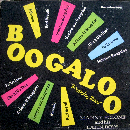Latin music question
 mannybolone
Los Angeles, CA 15,025 Posts
mannybolone
Los Angeles, CA 15,025 Posts
I'm trying to learn more about the origins of the montuno style of Latin piano playing, i.e. the repeating piano riff that poweres so many Latin dances from guaguanc??, through boogaloo, through salsa. I've also seen this same motif refered to as a tumbao.Anyone clear this up? And does anyone know which Latin dance originally popularized its use? I'm assuming it's Cuban in origin but that's all I can guess.Thanks.

Comments
Anyway, to give a more specific answer, the montuno is an element of the son and it originates in Cuba.
Tumbao, from Orovio???s encyclopaedia of Cuban music: "The term tumbao is perhaps best translated as "groove". It refers most often to the basic pulse of a composition, with characteristic aggregate rhythms, pulses, emphases, and syncopations. Rafael Cuerto of the Trio Matamoros is said to have developed a tumbao???in this case a unique strumming patters???on the guitar that the used to accompany sones. It proved highly influential with alter generations of performers. Alternatively, tumbao can refer to the most typical patters played on particular instruments, especially the conga drum. Tumbao in this sense is the most fundamental rhythm of the instrument that the performer will repeat in endless variation throughout the course of a composition.???
By montuno, I specifically mean the repetitive PIANO riff that powers so much of post-60s Latin dance music, including salsa and boogaloo (though it's also an important part of lot of pachangas, guarachas, and guajiras I've heard).
I'm certainly no expert, but I believe the montuno is simply an element of the son.
I think you're actually referring to the tumbao.
Doing some further research, I think the two terms are used some what interchangably, depending on the context.
In essence, when used to describe a repeating rhythm that anchors a song, both montuno and tumbao are applicable and synonymous terms. In other words, if you describe the underlying piano vamp as "a keyboard montuno" or "keyboard tumbao" people would understand what you mean.
For some, the montuno = a melodic rhythm played by piano specifically while the tumbao = a rhythmic bassline specifically. It might very well be that the origins of these terms came from their application to these specific instruments but have since become more general terms for what they represent, musically, within a song.
Either way, it sems like all this dates back to the Cuban son though I think the way we hear it in the States probably has more to do with how Puerto Rican musicians adapated these elements into Latin dance from at least the mambo moving forward.